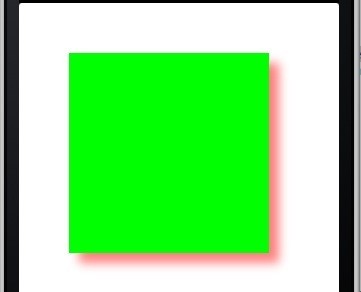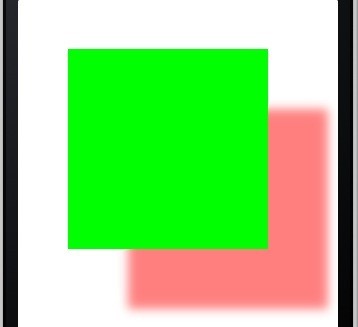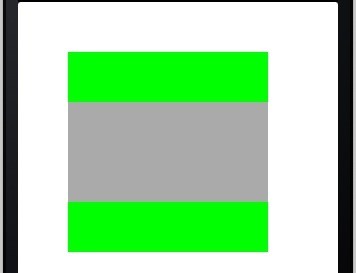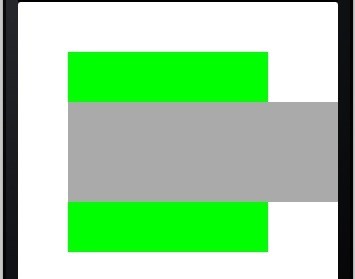前言:iOS的Core Animation,有很多概念,包括Layer(层)、Animation(动画)和Timing(时序)、Layout(布局)和constraint(约束)、Transaction(处理)。其中Layer是最基础的。
Layer有多种,最基本的是CALayer,它也是其他种类Layer的父类。CALayer的子类有:
- CAScrollLayer,用于简化显示层的一部分
- CATextLayer,便于从字符串生成内容是文本的层
- CATiledLayer,可用于显示复杂的图片
- CAOpenGLLayer,提供OpenGLES渲染环境
一、CALayer是什么?
CALayer是个简单的类,它是用来在屏幕上显示内容展示的矩形区域。咋一看,和UIView的描述是一样的,但它们确确实实不同,有很多的区别。每个UIView都有一个根CALayer,UIView在这个layer上描绘东西。我们通过CALayer *myLayer = myView.layer;来访问view的layer。
二、CALayer有那些属性?
- 层的大小和位置
- 层的背景颜色
- 层的内容(图像,core graphics) layer.content
- 层的的圆角,半径
- 层的阴影设置
三、CALayer的一些用法
错误:"_OBJC_CLASS_$_CALayer", referenced from:
解决办法:在你的Frameworks里面添加QuartzCore.framework,步骤:target---》build phases ->Link Binary With Libraries
要加上#import <QuartzCore/QuartzCore.h>
- (void)viewDidLoad { [super viewDidLoad]; UIView *myView = [[UIView alloc] init]; [self.view addSubview:myView]; myView.backgroundColor = [UIColor greenColor]; myView.frame = CGRectMake(50, 50, 200, 200); //下面将添加我们下面介绍的一些方法,为了看的清楚,我们都提出来介绍 ... }
1、利用layer加阴影:
//设置 CALayer 背景(shodow)的位置 myView.layer.shadowPath = [UIBezierPath bezierPathWithRect:myView.frame].CGPath; //很重要的属性,可以用此属性来防止子元素大小溢出父元素,如若防止溢出,请设为 true myView.layer.masksToBounds = NO; //shadow 在 X 和 Y 轴 上延伸的方向,即 shadow 的大小 myView.layer.shadowOffset = CGSizeMake(10, 10); //shadow 的渐变距离,从外围开始,往里渐变 shadowRadius 距离 myView.layer.shadowRadius = 5; //shadow 的透明效果 myView.layer.shadowOpacity = 0.5; myView.layer.shadowColor = [UIColor redColor].CGColor;
效果如下:

这里面重点要讲的是shadowPath,它表示背景的位置,我们一般设的参数为[UIBezierPath bezierPathWithRect:myView.bounds].CGPath;打印myView.bounds,数值为(0,0,200,200),这里觉得很奇怪,bounds和frame有什么区别联系了?为什么阴影的shadowPath位置是(0,0,200,200)但其实不在这个位置了?
为了弄清楚这个问题,我直接把shadowPath = [UIBezierPath bezierPathWithRect:CGRectMake(50, 50, 200, 200)].CGPath;得到的效果如右上图。可以看的很清楚,bezierPathWithRect:的参数坐标是以myView的起点为坐标的。
bounds和frame有什么区别联系了?直观上说,bounds和frame所表示的长和宽是一样的,
frame指的是:该view在父view坐标系统中的位置和大小。(参照点是父亲的坐标系统)
bounds指的是:该view在本身坐标系统中 的位置和大小。(参照点是本身坐标系统)
2、加边框
// 边框颜色和宽度,很常用 myView.layer.borderWidth = 3; myView.layer.borderColor = [[UIColor blueColor] CGColor];



图1 加边框 图2 不允许溢出 图3 允许溢出
3、masksToBounds
myView.layer.masksToBounds = NO; UIButton *btn = [[UIButton alloc] initWithFrame:CGRectMake(0,50, 300,100)]; btn.backgroundColor = [UIColor lightGrayColor]; [myView addSubview:btn];
允许溢出,设为NO,不允许溢出,设为YES.
4、layer自己也有边界、透明度
myView.layer.bounds = CGRectMake(0, 0, 300, 300);//边界 myView.layer.opacity = 0.5;//透明度 myView.layer.cornerRadius = 5;//圆角
四、新建layer,再layer上贴图,或自己绘图

// // ViewController.m // CALayerFun // // Created by rongfzh on 13-2-20. // Copyright (c) 2013年 rongfzh. All rights reserved. // #import "ViewController.h" #import <QuartzCore/QuartzCore.h> @interface ViewController () @end @implementation ViewController - (void)viewDidLoad { self.view.layer.backgroundColor = [UIColor orangeColor].CGColor; self.view.layer.cornerRadius = 20.0; self.view.layer.frame = CGRectInset(self.view.layer.frame,20, 20); CALayer *sublayer = [CALayer layer]; sublayer.backgroundColor = [UIColor purpleColor].CGColor; sublayer.shadowOffset = CGSizeMake(0, 3); sublayer.shadowRadius = 5.0; sublayer.shadowColor = [UIColor blackColor].CGColor; sublayer.shadowOpacity = 0.8; sublayer.frame = CGRectMake(30, 30, 128, 192); sublayer.borderColor = [UIColor blackColor].CGColor; sublayer.borderWidth = 2.0; sublayer.cornerRadius = 10.0; [self.view.layer addSublayer:sublayer]; //贴图 CALayer *imageLayer = [CALayer layer]; imageLayer.frame = sublayer.bounds; imageLayer.cornerRadius = 10.0; imageLayer.contents = (id)[UIImage imageNamed:@"snaguosha.png"].CGImage; imageLayer.masksToBounds = YES; [sublayer addSublayer:imageLayer]; //绘图,调用setNeedsDisplay CALayer *customDrawn = [CALayer layer]; customDrawn.delegate = self; customDrawn.backgroundColor = [UIColor greenColor].CGColor; customDrawn.frame = CGRectMake(30, 250, 280, 200); customDrawn.shadowOffset = CGSizeMake(0, 3); customDrawn.shadowRadius = 5.0; customDrawn.shadowColor = [UIColor blackColor].CGColor; customDrawn.shadowOpacity = 0.8; customDrawn.cornerRadius = 10.0; customDrawn.borderColor = [UIColor blackColor].CGColor; customDrawn.borderWidth = 2.0; customDrawn.masksToBounds = YES; [self.view.layer addSublayer:customDrawn]; [customDrawn setNeedsDisplay]; [super viewDidLoad]; } static inline double radians (double degrees) { return degrees * M_PI/180; } void MyDrawColoredPattern (void *info, CGContextRef context) { CGColorRef dotColor = [UIColor colorWithHue:0 saturation:0 brightness:0.07 alpha:1.0].CGColor; CGColorRef shadowColor = [UIColor colorWithRed:1 green:1 blue:1 alpha:0.1].CGColor; CGContextSetFillColorWithColor(context, dotColor); CGContextSetShadowWithColor(context, CGSizeMake(0, 1), 1, shadowColor); CGContextAddArc(context, 3, 3, 4, 0, radians(360), 0); CGContextFillPath(context); CGContextAddArc(context, 16, 16, 4, 0, radians(360), 0); CGContextFillPath(context); } - (void)drawLayer:(CALayer *)layer inContext:(CGContextRef)context { CGColorRef bgColor = [UIColor colorWithHue:0 saturation:0 brightness:0.15 alpha:1.0].CGColor; CGContextSetFillColorWithColor(context, bgColor); CGContextFillRect(context, layer.bounds); static const CGPatternCallbacks callbacks = { 0, &MyDrawColoredPattern, NULL }; CGContextSaveGState(context); CGColorSpaceRef patternSpace = CGColorSpaceCreatePattern(NULL); CGContextSetFillColorSpace(context, patternSpace); CGColorSpaceRelease(patternSpace); CGPatternRef pattern = CGPatternCreate(NULL, layer.bounds, CGAffineTransformIdentity, 24, 24, kCGPatternTilingConstantSpacing, true, &callbacks); CGFloat alpha = 1.0; CGContextSetFillPattern(context, pattern, &alpha); CGPatternRelease(pattern); CGContextFillRect(context, layer.bounds); CGContextRestoreGState(context); } - (void)didReceiveMemoryWarning { [super didReceiveMemoryWarning]; // Dispose of any resources that can be recreated. } @end
关于第四步,具体可参考:http://blog.csdn.net/totogo2010/article/details/8605092
